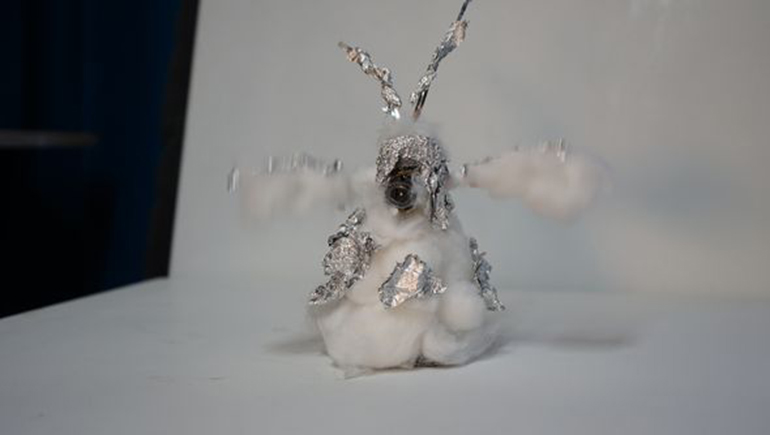Beginning of February 2020 the Parallax Lab hosted its first workshop "IMPROBOTS" at Hybrid Plattform for the transmediale and CTM's Vorspiel festival. With questions such as “Do robots always have to follow the same design?”, “How can we get hands-on with emerging technologies?” and “Can mundane objects have different uses?“, the workshop participants emerged in an evening of exploring and challenging the norms of making robots.
Parallax Lab was founded originally as the Light and Reflection Lab in 2017, starting off as weekly meetings of a small group of physics, art, music and architecture students. It began as an impulse of two physics students from TU Berlin (Clara Rodríguez Roca-Sastre and Emma Sokoll) who were searching for new perspectives beyond their studies.
Although Physics is, contrary to common belief, a very creative field of study, it may be described as lacking a broader view on the world. Ethical or societal topics are rarely discussed within the studies, even though they should very much be considered in science and generally in any field of research. Physics also tends to convey quite a rigid view on life - a "true" or "false" philosophy, which allows little room for alternative perspectives. One tends to think more about the matter than about oneself.
In this sense, the founding of Light and Reflection Lab was an embarkment on the search for other points of view. This purpose still manifests itself in Parallax Lab, which has undergone many developments since the founding - a new name, additional core team members (Charlotte Maurer, Victoria Martínez, studying physics at TU and fine arts at UdK respectively) that brought substantial new impulses, and our own rooms at the University of Arts. The Parallax effect is generally understood as the effect whereby the position or direction of an object appears to differ when viewed from different positions. We embrace this effect, and in a sense, redefine the concept. For us, the Parallax effect is, in essence, about viewing things from a number of different perspectives - from the point of view of a philosopher, an artist, a physicist, or an engineer. Transdisciplinarity is therefore our main topic of research, branching out into dealings with light, sound and electronics.
Currently, we are looking to extend our perspectives further - we also want to view things through the eyes of a woman, a man, a cyborg, a witch. And anybody who feels drawn to being a part of our community, no matter their background. In our weekly meetings, anyone is welcome to join our venture for a diverse community in which the humanities, arts and sciences can encounter each other at eye level. Our community is about exchanging skills, knowledge and experience in a free and open space which can be shaped by everyone. From this exchange, transdisciplinary collaborations are born - extraordinary combinations of art with neuronal networks, mechanical systems, or microcontrollers, to name a few.
Prospectively, we want to direct our attention increasingly toward the organisation of workshops, in which we invite experts from a variety of disciplines, to learn from and exchange with them. Every semester, we have a general topic on which we focus our content - last semester, it was experimental electronics and sound. We discussed “cyber witches”, artificial intelligence and learned how to solder. In our recent self-organised Improbots (improvised robots) workshop at Hybrid Lab, organised in the frame of CTM festival, we discussed the role of robots in our daily lives. What are robots and how do we treat them? Can they have personalities or genders? And do the genders we may assign to them reflect certain roles in our existing society? We aimed to demystify robots, giving access to an understanding of technology through building simple robots within only a few hours using motors, batteries and upcycled material.
As a continuation and development of this topic, in the workshops of the upcoming semester we will be on the search for the path that bridges technology and natural processes. In the spirit of philosopher Donna Haraway, we want to once again apply the Parallax Effect to the creation of technological devices and their relation to the human and animal realm.
Email: lab.parallax(at)gmail.com
fb/insta: @lab.parallax

